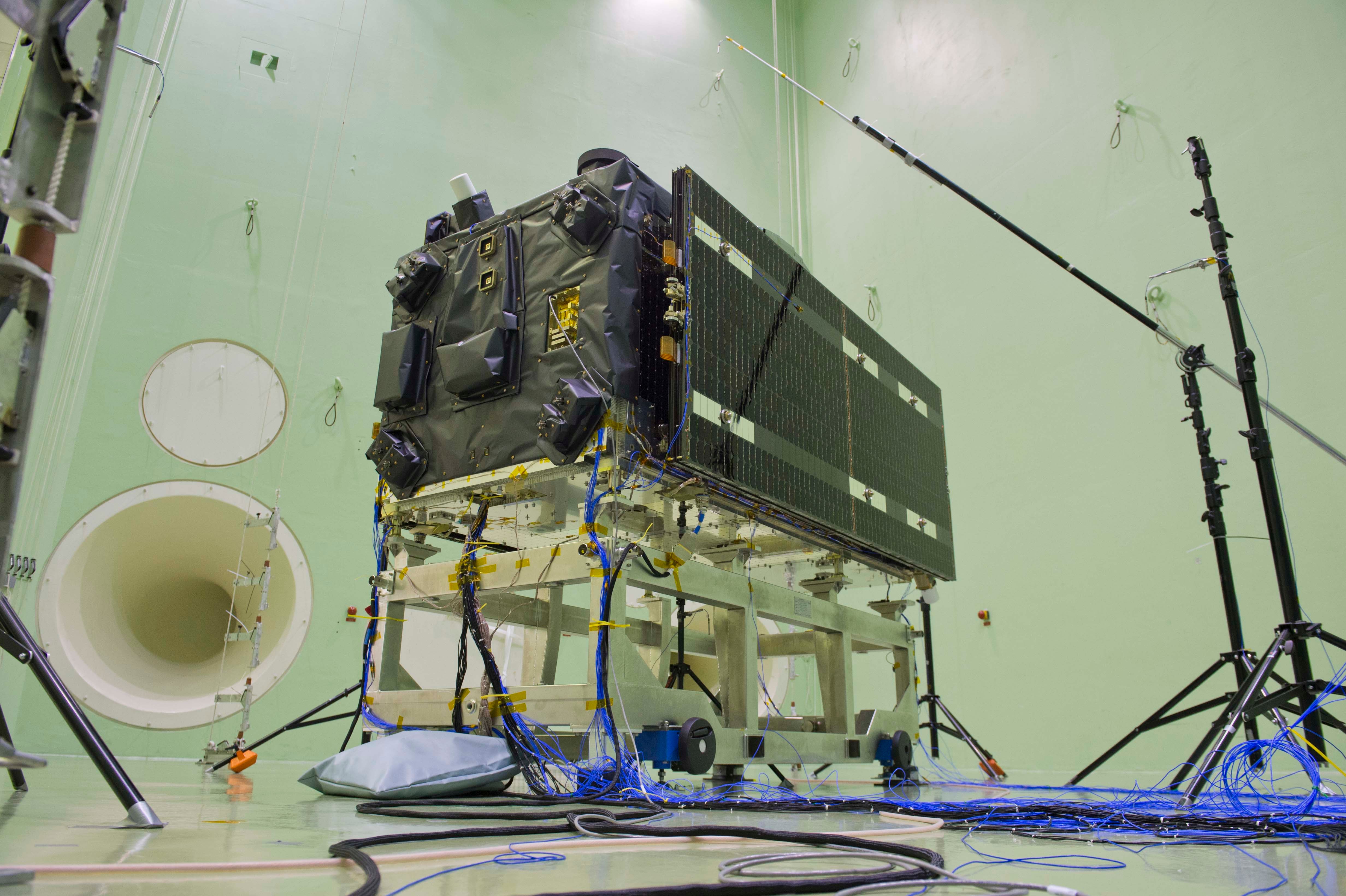(Spoiler alert: Yes it does . . . probably . . . um, maybe . . .I mean, it has to.)
An interwebs firestorm has been raging recently about a
Numberphile video that makes the astounding claim that if you add up all the positive whole numbers from one to infinity, the result will be -1/12. To write it out more concisely
1+2+3+4+ . . . = -1/12 , (where the three dots indicate all the rest of the positive numbers up to infinity)
If you haven't seen the video, take a look - it's short.
Fascinating, isn't it?
Renowned science writer and astronomer Phil Plait (
Bad Astronomy) blogged about the video recently, calling it "
simply the most astonishing math you'll ever see." The post led to a Twitter and comment storm, fueled both by people bowled over by the calculation and a much larger number of people convinced it was nothing short of mathematical fraud.The passionate response he got to his post led Plait to write a
follow up piece, partly in self defense, and partly as penance for his various mathematical sins as pointed out by his readers.
Clearly, only a fool would consider defending this absurd calculation after the reception Plait got.
So here I go . . .
First, About the MathI'm not going to follow Plait's example of trying to explain the math that goes into the calculation. But I will point out that many of the problems that commenters and Twitterers latched onto are irrelevant if you look at the more elaborate discussion in the Numberphile's extra footage. In the much longer second video, they come to the same reviled result as in the first video, except that they use an approach first written down by
Leonhard Euler.
If you dislike the initial video, you really should watch this one to see if it sways you at all.
That's much better, isn't it? I'm sure it's not perfect, but the flaws are beyond my mathematical abilities to recognize.
In any case I'm willing to believe 1+2+3+4+ . . . = -1/12 is a mathematically legitimate thing to write down for the following three reasons.
1. Euler, who was one of the greatest mathematicians of all time,
proved the equation for
real numbers.
2. Another great mathematician,
Bernhard Riemann, generalized Euler's approach to include
complex numbers, and came up with the same equation.
3. My favorite mathematician, the self-taught genius
Srinivasa Ramanujan, rediscovered the equation and stood by it, even though he realized that
he might be thought be mad for making the claim, writing in a letter to mathematician
G.H. Hardy, "I told him that the sum of an infinite number of terms of the series: 1 + 2 + 3 + 4 + · · · = −1/12 under my theory. If I tell you this you will at once point out to me the lunatic asylum as my goal."
So, counting the Numberphiles' somewhat dubious derivation, there are at least four ways to prove that the sum of all the positive integers equals -1/12. And as far as I know, there's no way to prove that it doesn't equal -1/12.*
If you don't believe any of these people, then there's nothing I can do, mathematically speaking, to change your mind. I mean these guys are among the greatest. What could I add that would improve on their proofs?
But, Obviously 1+2+3+4+ . . . = -1/12 Doesn't Really Mean Anything - Right? Of the mathematicians and physicists I've talked to about it, several of them are willing to accept that it's possible to derive the equation, but insist that it's meaningless. They tell me, if I understand them correctly, that it's some sort of numeric fluke that can't possibly have any consequences in the real world. There's just no way to add positive numbers together get a negative result in reality, especially when the numbers you're adding are getting larger and larger. In effect, it's nothing more than an artifact that results from a method that makes sense when applied to complex variables or other series, but not for the sum of positive integers. To think otherwise would be nuts, right?
The problem is, they're wrong (or so a number of physicists have told me). The equation 1+2+3+4+ . . . = -1/12 is vital for describing the real world.
As the Numberphile people point out, the dreaded equation pops up in many places in physics. They specifically note it's appearance in a string theory textbook (see page 22 in this
Google book). But that's only one example and, depending on how you feel about string theory, among the least convincing ones. What's much more compelling is the fact that this sort of equation is integral to
Quantum Electrodynamics (QED).
QED is the theory that explains the interaction between charged particles like electrons and protons. Along with neutrons, electrons and protons make up atoms, which in turn make up molecules and everything built of them. In other words, QED essentially describes much of the physical world we live in. And it does it extremely well. QED calculations for the spin of the electron have been confirmed to better than one part in ten trillion - making QED just about the most precise and successful theory of all time.
If QED is correct (and it appears to be the most correct theory yet developed, if experimental confirmation is a reasonable way to judge correctness), then I would argue that the things that go into QED calculations must be just as correct. Doing QED calculations requires using 1+2+3+4+ . . . = -1/12, so the equation is at least as correct as QED theory itself.
In fact, the Wikipedia page on a QED phenomenon known as the Casimir Effect shows a
derivation of the effect that includes an even more audacious equation involving the sum of the
cubes of the natural numbers up to infinity. Specifically, calculating the effect involves using the equation
1^3+2^3+3^3 +4^3+ . . . = 1/120, (where the notation 2^3 means 2x2x2)
(In the Wikipedia article, they have an equation that looks like this

, but the stuff on the left hand side is just another way of writing 1^3+2^3+3^3 +4^3+ . . .)
The number on the right is positive this time, but it's ten times smaller than 1/12, even though each of the terms in the sum is much bigger than the corresponding terms in the equation 1 + 2 + 3 + 4 + . . . = −1/12 (except for the first term, of course, since 1^3 = 1). Both equations come from the same sort of derivation, so it's not surprising that they are both seemingly incredible and ridiculous. But if you believe in QED and the Casimir Effect, how can you not believe the pieces that go into them?
Maybe It's Just a TrickOne response I've gotten after querying my more mathematically savvy friends is that the equations are nifty tricks, and nothing more, to get rid of infinities in QED and produce the correct finite answers. I guess that's possible, but you would have to be one heck of a mathamagician to come up with a trick resulting in accuracy of a part in ten trillion.
It's even more impressive when you consider that the QED predictions came before the experiments that measured things like the electron spin to fourteen decimal places. It's one thing to design a trick to rationalize a number you already know. It's a whole other matter to come up with a trick that gives you the answers in advance of the experiment. In that case, it's not a trick, it's simply a very good theory.
Maybe It's Not Necessary, Just HandyOne final possibility that I can think of is that the equations are not really necessary for doing QED calculations, and that instead there is a correct and intelligible approach that gives answers without using nonsense like 1 + 2 + 3 + 4 + . . . = −1/12 or 1^3+2^3+3^3 +4^3+ . . . = 1/120.
I can't imagine why physicists would rather rely on trickery than doing things correctly, so I tend to dismiss the idea that some sort of mathematical conspiracy is behind it all. If it turns out that it's possible to have physical theories that describe the real world as well as QED does without relying these equations, then we might as well use those theories and forget the whole controversy.
So What's Really Wrong?If you accept that Euler, Riemann, and Ramanujan did things properly when they found 1 + 2 + 3 + 4 + . . . = −1/12, and if you accept that it and related equations are necessary to describe the real world, then how can you not accept that the equation is true? And yet, many people still claim that there's something wrong. It doesn't make sense. It's so counter intuitive that the phrase "counter intuitive" seems far too weak a description. It's an alien, freakish, mind f----.
But that's OK. Some things are true without being conceivable. This is just the most recent example I can think of. Pythagoras and and his followers apparently committed human sacrifice because they couldn't handle the idea of
irrational numbers. For centuries, ancient mathematicians struggled with unsolvable problems because they didn't know that pi is a
transcendental number. And today, there are still things about quantum mechanics that defy intuitive understanding - the whole point of
Schrodinger's Cat is to illustrate the absurdity of quantum superposition. But just because people didn't intuitively grasp those things, it didn't change the fact the the square root of 2 is irrational, that pi's transcendental nature means it's
impossible to square the circle, and that particles can become quantum mechanically entangled just like Schrodinger's Cat.
Yes, there's a problem with 1 + 2 + 3 + 4 + . . . = −1/12. But I suspect the problem is with us and our failure to understand infinity. Why shouldn't an infinite sum of numbers going to infinity add up to a finite (and negative!) number? I don't really know what infinity means anyway, so I can't think of any way to object to a statement that includes not one but TWO infinities in it.
You might as well ask me why a bandersnatch of numbers going to bandersnatch add up to -1/12. But if you're able to mathematically sum a bandersnatch of bandersnatches, and then use that sum to describe the real world and predict the outcomes of real world experiments
I have no choice but it seems unreasonable not to believe your bandersnatch math.
So, Does 1 + 2 + 3 + 4 + . . . = −1/12 or not?You bet your bandersnatch it does! (I think, anyway)






















 Etsy seller
Etsy seller 


 Not interested in buying a Steam Machine this year, but still want a tiny gaming PC? Never fear -- CyberPowerPC has just released the Zeus Mini, its latest take on a conventional small computer with full-sized performance. The system is just 4.4 ...
Not interested in buying a Steam Machine this year, but still want a tiny gaming PC? Never fear -- CyberPowerPC has just released the Zeus Mini, its latest take on a conventional small computer with full-sized performance. The system is just 4.4 ...

 According to reports (and confirmed by the internet company itself), Google has bought Deepmind: a relatively small AI company from London. Re/code broke the news, stating that Google had sunk $400 million into the purchase -- a figure that the ...
According to reports (and confirmed by the internet company itself), Google has bought Deepmind: a relatively small AI company from London. Re/code broke the news, stating that Google had sunk $400 million into the purchase -- a figure that the ...


 Pacemakers and other electronic implants are a pain to keep running -- patients need surgery to replace batteries, and body-powered generators aren't currently strong enough to charge these devices. They may be far more practical in the future, ...
Pacemakers and other electronic implants are a pain to keep running -- patients need surgery to replace batteries, and body-powered generators aren't currently strong enough to charge these devices. They may be far more practical in the future, ...
 , but the stuff on the left hand side is just another way of writing 1^3+2^3+3^3 +4^3+ . . .)
, but the stuff on the left hand side is just another way of writing 1^3+2^3+3^3 +4^3+ . . .)
 Most of us only pay attention to time when it's causing headaches, but the same can't be said of a team of researchers working out of the University of Colorado at Boulder. Led by National Institute of Standards and Technology fellow Jun Ye, they've ...
Most of us only pay attention to time when it's causing headaches, but the same can't be said of a team of researchers working out of the University of Colorado at Boulder. Led by National Institute of Standards and Technology fellow Jun Ye, they've ...
 You may not have come across DJI before, but this brand is no stranger in the world of hobbyist drones. Even production studios use the company's gear for aerial videography, but that involves a lot more money than the average consumer can stomach -- ...
You may not have come across DJI before, but this brand is no stranger in the world of hobbyist drones. Even production studios use the company's gear for aerial videography, but that involves a lot more money than the average consumer can stomach -- ...